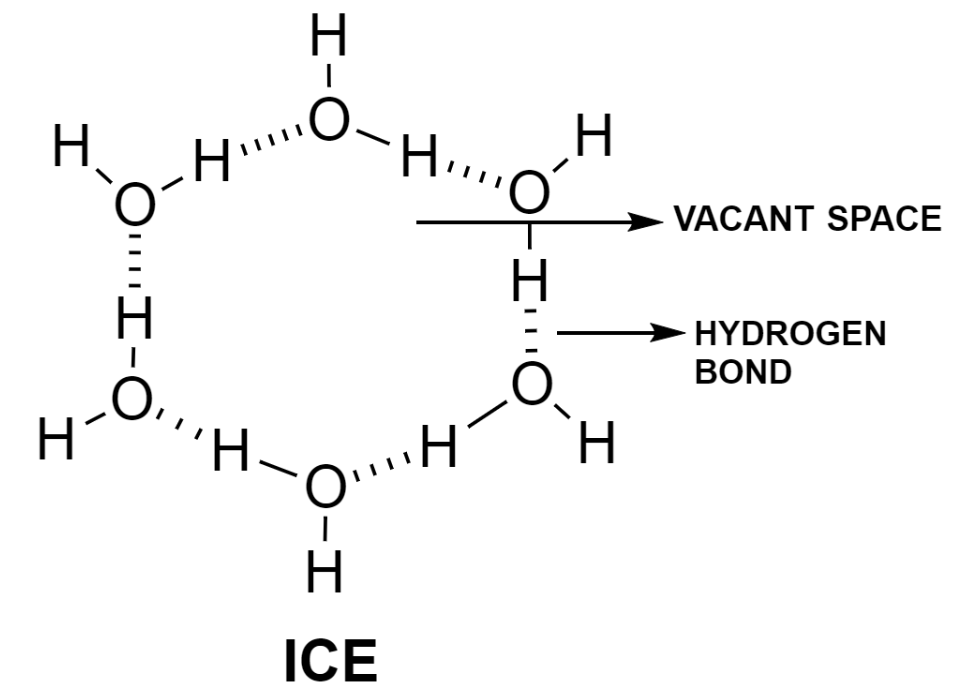
What type of water is least dense?
Answer
433.8k+ views
Hint: The density is the amount of mass present in specific volume of a substance. It depends upon the structural arrangement of the substance. The substance in which molecules and atoms are far apart from each other is said to be less dense.
Complete answer:
Water is an essential part of our lives. It covers up to 70% of the earth’s surface. It exists in solid, liquid and gaseous phase within a low range of temperature and pressure.
Each water molecule is made up of two hydrogen atoms and one oxygen atom. These molecules of water are bonded to each other by hydrogen bonds in liquid state. Density is defined as the mass per unit volume of a substance. The density of water at room temperature is approximately
When water gradually cools, its mass remains constant but volume decreases. Since volume is inversely proportional to the density, thus density of water should increase with decrease in temperature. But when the temperature of water reaches
At

The density of water is maximum at
Hence, water at
Note:
The substance with lower value of density tends to float upon the substance with higher density. Since the density of water at
Complete answer:
Water is an essential part of our lives. It covers up to 70% of the earth’s surface. It exists in solid, liquid and gaseous phase within a low range of temperature and pressure.
Each water molecule is made up of two hydrogen atoms and one oxygen atom. These molecules of water are bonded to each other by hydrogen bonds in liquid state. Density is defined as the mass per unit volume of a substance. The density of water at room temperature is approximately
When water gradually cools, its mass remains constant but volume decreases. Since volume is inversely proportional to the density, thus density of water should increase with decrease in temperature. But when the temperature of water reaches
At

The density of water is maximum at
Hence, water at
Note:
The substance with lower value of density tends to float upon the substance with higher density. Since the density of water at
Recently Updated Pages
Master Class 9 General Knowledge: Engaging Questions & Answers for Success

Master Class 9 English: Engaging Questions & Answers for Success

Master Class 9 Science: Engaging Questions & Answers for Success

Master Class 9 Social Science: Engaging Questions & Answers for Success

Master Class 9 Maths: Engaging Questions & Answers for Success

Class 9 Question and Answer - Your Ultimate Solutions Guide

Trending doubts
Where did Netaji set up the INA headquarters A Yangon class 10 social studies CBSE

A boat goes 24 km upstream and 28 km downstream in class 10 maths CBSE

Why is there a time difference of about 5 hours between class 10 social science CBSE

The British separated Burma Myanmar from India in 1935 class 10 social science CBSE

The Equation xxx + 2 is Satisfied when x is Equal to Class 10 Maths

What are the public facilities provided by the government? Also explain each facility




